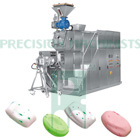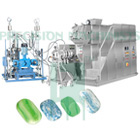Plants for saponification of Fats, Oil or Neutralisation of Fatty Acid into neat soap using following processes.
Batch Processes
This is a batch process which involves complete saponification of oil with caustic and then separation of glycerine. First the complete Saponification of oils takes place, by addition of caustic lye, then the mass is left to settle in the pan. Two layers are thus formed. The upper layer of soap at about 60% TFM content and a lower layer of water containing glycerine and the water soluble impurities originally found in the oils.
The glycerine water which has been separated from the soap is further washed diluting it again with water.
The Neat soap thus produced is then taken for further processing.
Batch Processes
This is a batch process which involves complete saponification of oil with caustic and then separation of glycerine. First the complete Saponification of oils takes place, by addition of caustic lye, then the mass is left to settle in the pan. Two layers are thus formed. The upper layer of soap at about 60% TFM content and a lower layer of water containing glycerine and the water soluble impurities originally found in the oils.
The glycerine water which has been separated from the soap is further washed diluting it again with water.
The Neat soap thus produced is then taken for further processing.
This is a batch process which involves the saponification. Here all the raw materials react to form the final product without formation of any by-product.
The neat soap produced includes all the glycerine contained in the oils as there is no glycerine separation or washing of the soap.
This process is called "semi-boiled".
The Neat soap thus produced is then taken for further processing.
This is a batch process which involves the neutralisation of fatty acid and caustic lye is mixed in the Crutcher after the reaction, the neat soap if formed.
The Neat soap thus produced is then taken for further processing.
Continuous Processes
The Saponification of neutral oils is slow when it is done in a soap pan and boiling is done under atmospheric pressure.
However, this process can be speeded up by application of higher temperature and higher pressure.
This continuous Saponification plant uses higher temperature and pressure, giving continuous separation of glycerine lye, and of the neat soap.
The Neat soap thus produced is then taken for further processing.
The neutralisation of fatty acids is a very simple soap-making process.
In this process, fatty acids and caustic lye is added continuously. The mass is then passed through the homogenising mill, where the reaction takes place quickly and the final product is very homogeneous.
Plants for converting neat soap to Soap Noodles or Bar using following processes
Batch Processes
The neat soap from the saponification plant or the Neutralisation plant has to be cooled before it can be converted into Bars or tablets. The neat soap is then poured into Mould where it is left to dry for one to two days and then processed further to make tablet and bars.
Batch Processes
The neat soap from the saponification plant or the Neutralisation plant has to be cooled before it can be converted into Bars or tablets. The neat soap is then poured into Mould where it is left to dry for one to two days and then processed further to make tablet and bars.
The neat soap from the saponification plant or the Neutralisation plant has to be cooled before it can be converted into bars or tablets. The neat soap is then poured into a cooling double drum to dry the soap into flakes for further processing. Cooling Drum Powder For Soap Plant
The neat soap from the saponification plant or the Neutralisation plant has to be cooled before it can be converted into bars or tablets.
This operation is achieved using the vacuum spraying plant using the following machinery:
| Filter | Vacuum System | ||
| Heat Exchanger | Soap Recuperator | ||
| Vacuum Spraying Unit | Noodler/Vacuum Plodder |
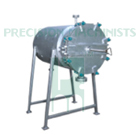 |
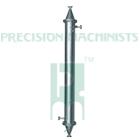 |
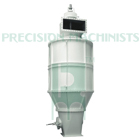 |
|
| Filter | Heat Exchanger | Vacuum Spraying Unit | |
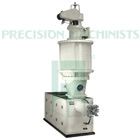 |
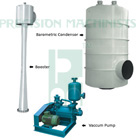 |
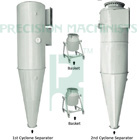 |
|
| Vacuum Spraying Unit on Plodder | Vacuum System | Soap Recuperator | |
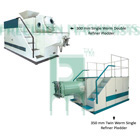 |
|||
| Noodler/Vacuum Plodder |
The neat soap from the saponification plant or the Neutralisation plant has to be cooled before it can be converted into Toilet Soap Noodles.
This operation is achieved using the vacuum spraying plant using the following machinery:
| Filter | Vacuum System | ||
| Heat Exchanger | Soap recuperator | ||
| Vacuum spraying unit | Noodler/Vacuum Plodder |
 |
 |
 |
|
| Filter | Heat Exchanger | Vacuum Spraying Unit | |
 |
 |
 |
|
| Vacuum Spraying Unit on Plodder | Vacuum System | Soap Recuperator | |
 |
|||
| Noodler/Vacuum Plodder | |||
To manufacture laundry soap, the laundry soap noodles have to be mixed with colour, perfume, builders, fillers and other ingredients as per the formulation. It has to be produced in different shape and size as per the requirement which is done using the following machinery.
A Laundry Soap Finishing Line includes the following Machinery:
| Sigma Mixer/Amalgamator | Cutting with Embossing Machines | ||
| Refiner Plodder | Stampers | ||
| Roll Mill | Chiller | ||
| Conveyor | Electrical Panel | ||
| Vacuum Plodder |
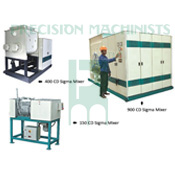 |
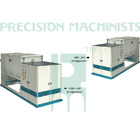 |
 |
|
| Sigma Mixer/Amalgamator | Sigma Mixer/Amalgamator | Refiner Plodder | |
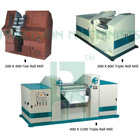 |
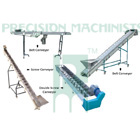 |
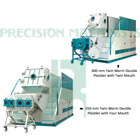 |
|
| Roll Mill | Conveyor | Vacuum Plodder | |
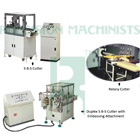 |
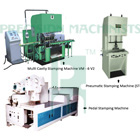 |
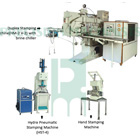 |
|
| Cutting with Embossing Machines | Stampers | Stampers | |
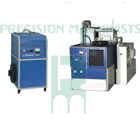 |
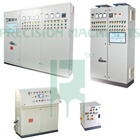 |
||
| Chiller | Electrical Panel |
To manufacture toilet soap the Toilet soap noodles have to be mixed with colour, perfume, preservative, glycerine, other ingredients as per the formulation. It has to be produced in different shape and size as per the requirement which is done using the following machinery.
A Toilet Soap Finishing Line includes the following Machinery:
| Sigma Mixer/Amalgamator | Cutting Machines | ||
| Refiner Plodder | Stampers | ||
| Roll Mill | Brine Chiller | ||
| Conveyor | Chiller | ||
| Vacuum Plodder | Electrical Panel |
 |
 |
 |
|
| Sigma Mixer/Amalgamator | Sigma Mixer/Amalgamator | Refiner Plodder | |
 |
 |
 |
|
| Roll Mill | Conveyor | Vacuum Plodder | |
 |
 |
 |
|
| Cutting Machines | Stampers | Stampers | |
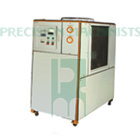 |
 |
 |
|
| Brine Chiller | Chiller | Electrical Panel |

